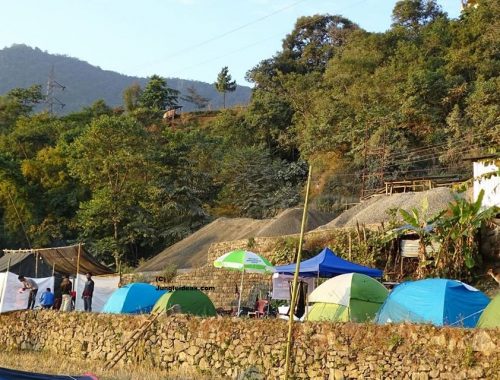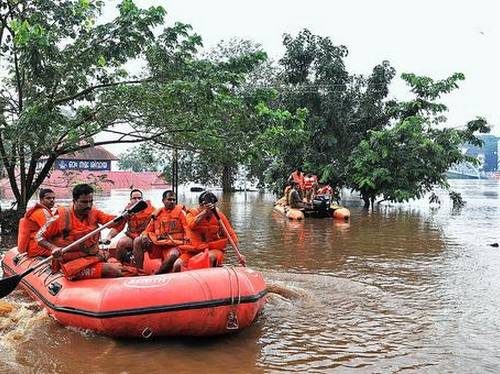An An-32 aircraft that went missing with 13 people aboard last week slammed into the face of a mountain very close to its summit in Arunachal Pradesh’s Mechuka region, a new photograph released by the Indian Air Force shows.
This is the clearest image of the wreckage to have emerged so far. The An-32 aircraft was first spotted by a Mi-17 helicopter yesterday from a height of 12,000 feet, and rescue workers are currently trying to find bodies and possible survivors.
Search operations began around 6.30 am today. While the Air Force successfully dropped eight to ten personnel near the crash site in two helicopter sorties, 15 mountaineers — nine from the Air Force, four from the Army and two civilians — have also been deployed. A few have reached the crash site, and others are scouring the surroundings woods for possible signs of survivors.
Local mountaineers who sighted the crash site have also been roped in by the Siang district administration.
The An-32, a Soviet-designed twin engine turboprop transport aircraft, had vanished from the radar around 1 pm on June 3 while flying from Jorhat in Assam to a remote military landing strip in Arunachal Pradesh’s Mechuka. An IAF C-130J transport aircraft, Sukhoi Su-30 fighter jets, NAVY P8-I search aircraft and a fleet of IAF and Army helicopters were deployed for the search over the last eight days. The Air Force used two Mi-17s and an Advanced Light Helicopter (ALH), the P8i — a long-range maritime reconnaissance aircraft from Tamil Nadu — for the purpose.
The base for the search-and-rescue operation has been set up at Kayiang in West Siang, an official with the Arunachal Pradesh government said. While a doctor and other emergency services have been positioned there, a back-up team has also been kept on stand-by. Air Force sources told NDTV that the base hospital at Jorhat has been kept ready for medical emergencies.
The mountainous and forested Mechuka region, where the An-32 aircraft had crashed, is believed to be one of the world’s most inhospitable for air travel.
(With ANI inputs)




